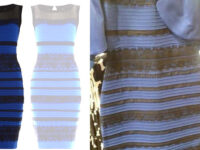Content Warning: This article discusses but condemns racism, ableism, and eugenics.
Before seeing a single patient, every doctor learns the ultimate maxim of healthcare: primum non nocere — first, do no harm. The principle of nonmaleficence is essential to medicine, and this ethical tenet grants the field a strong level of trust among the public. Despite this oath and reputation, the fields of medical and research ethics have had a history of moral wrongdoing — even though most, if not all, research organizations codify their ethical guidelines today. To understand the emphasis on bioethics today, we must look back to the most sinister parts of medical and scientific research.
To understand the emphasis on bioethics today, we must look back to the most sinister parts of medical and scientific research.
In the 1830s and 1840s, phrenology, the study of skull shapes and their correlation to mental ability, was a popular science in the United States and was used to justify violence and supremacy over Indigenous Peoples and African Americans. Today, we can confidently scoff at this field as pseudoscience, but its very real consequences were championed in the name of science and physiology. Physicians used phrenology to conclude that Black people were mentally inferior to white people and therefore a separate species that didn’t deserve to be treated as human. These racist scientists used the same justification to remove Native Americans from their homelands, claiming that they were a barrier to societal progress.
Fortunately, society did progress enough in the right way to abandon that maliciously false practice, but another more sinister one would take its place. One of the most renowned medical research laboratories in the world, the Cold Spring Harbor Laboratory in New York, was home to the Eugenics Records Office from 1910 to 1939. Their scientists sought to improve the genetic quality of the United States, and they advocated for removing unfit genes from society through exclusion or forced sterilization. They targeted people with physical disabilities, people with mental illness, people of color, and immigrants. The researchers in these labs weren’t fringe ideologues either — they successfully testified before the United States Congress to pass the Immigration Act of 1924, barring Jewish, Arabic, East Asian, and Eastern European people from entering the country. Even more startling, state legislatures enacted forced sterilization laws, and these policies led to the sterilization of as many as 70,000 people deemed “feebleminded” by eugenicists, with that figure being composed primarily of people of color and people with mental illnesses or impairments.
One of the most infamous experiments on people of color is the Tuskegee Syphilis Study that took place from 1932 to 1972.
One of the most infamous experiments on people of color is the Tuskegee Syphilis Study that took place from 1932 to 1972. The U.S. Public Health Service and Centers for Disease Control and Prevention, in tandem with Tuskegee University, enrolled 399 men with syphilis and 201 healthy men in the study, promising them free medical exams and treatment for “bad blood” (a general phrase that included syphilis, anemia, and fatigue). The subjects agreed to the experiment; however, they had not been informed of the true nature of the study: to observe the untreated progression of the disease. The participants were never treated for their syphilis, even when penicillin became a common treatment in 1947. As the patients went on untreated (or treated with placebos), the advisory panel for the study stopped the experiment in 1972, and it became a reckoning for informed consent in research studies after it was exposed to the public.
These dark moments in scientific research are important to highlight and learn from, but their caveats hardly make them real science. They were all done unethically, used poor methodologies, and had little to no scientific grounding. Phrenology is a pseudoscience, eugenics was founded on a rudimentary understanding of genetics and co-opted by racists (including Adolf Hitler and Nazi Germany), and the Tuskegee Experiment was futile and ethically unsound. Unfortunately, there are many more examples of unethical experiments, both in the United States and abroad, that have perpetuated dangerous conclusions under the guise of impartial science.
It’s important to realize that science can be weaponized by people with malintent. It’s lauded as an objective practice — indisputable fact. However, we must recognize when some practitioners don’t affirm the essential maxim of primum non nocere and try to take advantage of the ethos of the field. As physicians, researchers, and people intent on making the world better and more knowledgeable, we must look at the past to be cognizant of the innately intertwined relationship between science and its politicization. In doing so, we can build a better, more ethical future for everyone.
Image source: Pixabay.




